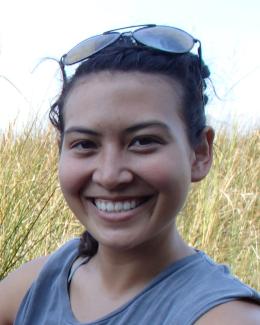Abstract
Methane (CH4) emissions from wetland ecosystems are controlled by redox conditions in the soil, which are currently underrepresented in Earth system models. Plant-mediated radial oxygen loss (ROL) can increase soil O2 availability, affect local redox conditions, and cause heterogeneous distribution of redox-sensitive chemical species at the root scale, which would affect CH4 emissions integrated over larger scales. In this study, we used a subsurface geochemical simulator (PFLOTRAN) to quantify the effects of incorporating either spatially homogeneous ROL or more complex heterogeneous ROL on model predictions of porewater solute concentration depth profiles (dissolved organic carbon, methane, sulfate, sulfide) and column integrated CH4 fluxes for a tidal coastal wetland. From the heterogeneous ROL simulation, we obtained 18% higher column averaged CH4 concentration at the rooting zone but 5% lower total CH4 flux compared to simulations of the homogeneous ROL or without ROL. This difference is because lower CH4 concentrations occurred in the same rhizosphere volume that was directly connected with plant-mediated transport of CH4 from the rooting zone to the atmosphere. Sensitivity analysis indicated that the impacts of heterogeneous ROL on model predictions of porewater oxygen and sulfide concentrations will be more important under conditions of higher ROL fluxes or more heterogeneous root distribution (lower root densities). Despite the small impact on predicted CH4 emissions, the simulated ROL drastically reduced porewater concentrations of sulfide, an effective phytotoxin, indicating that incorporating ROL combined with sulfur cycling into ecosystem models could potentially improve predictions of plant productivity in coastal wetland ecosystems.





